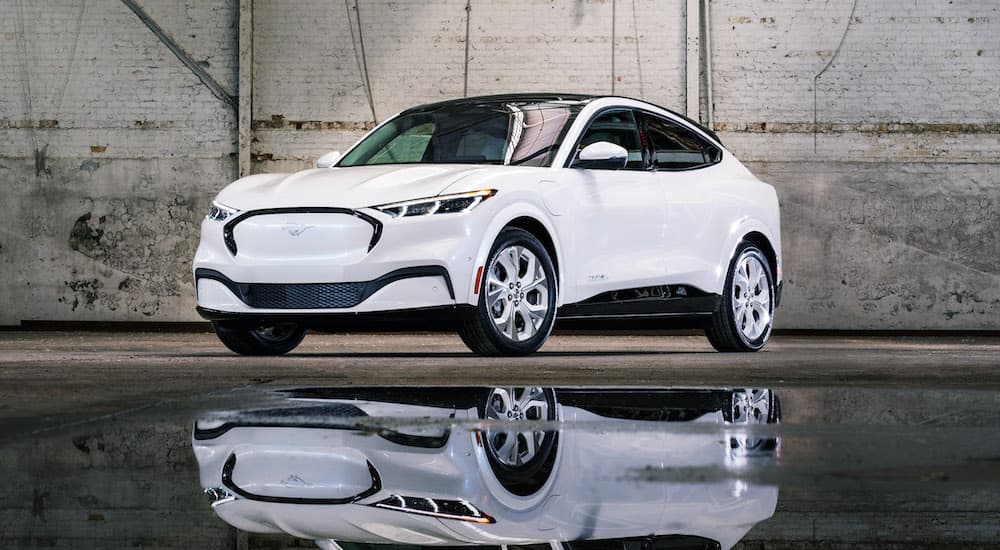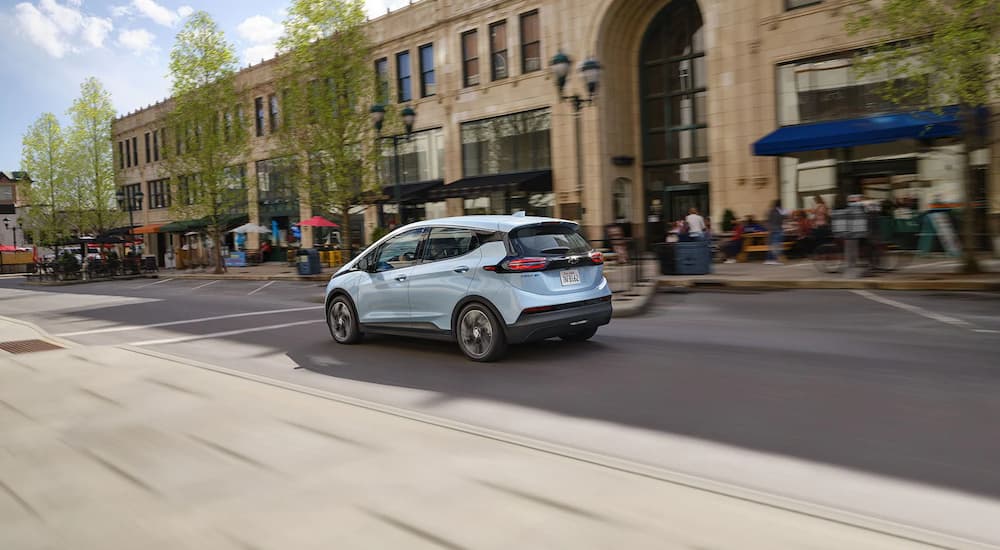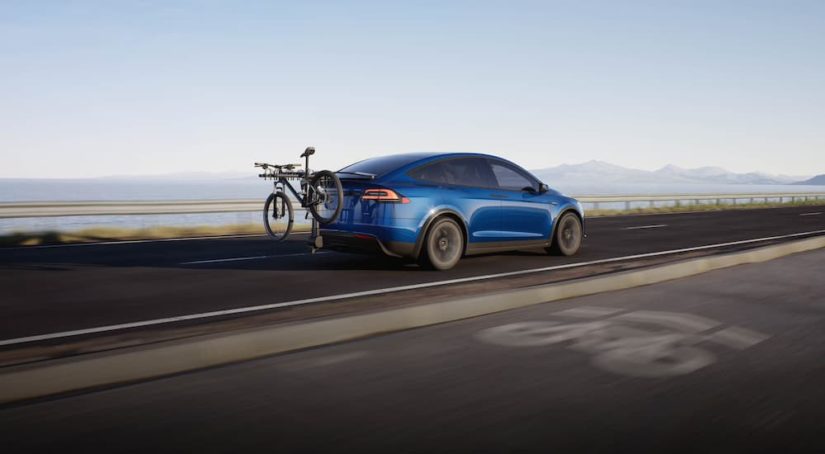When you’re shopping for a car, there are a ton of decisions you have to make: from choosing the right make and model to picking a dealership that will treat you fairly, and even just deciding on new vs used. The last thing you need throughout that process is yet another decision to make, and yet here we are with one more thing to consider: should you wait for upcoming EV tax credits to take effect? If you’re interested in an electric vehicle, then the tax credit is probably a big part of why you’re leaning in that direction.
Right now, you get a pretty hefty tax credit for choosing a plug-in electric vehicle rather than a model with a standard internal combustion engine. Figuring out how this credit works, making sure you’ll qualify for it, and getting the most from it can be tricky, and things are potentially about to change to make the credit even better. But, they’re also about to become slightly more confusing, even as they get more rewarding for you. Do you need to wait for this potential increase to the credit, or can you take advantage of it right now? Let’s find out…
What are EV Tax Credits?
Before we get into what could be changing with the EV tax credits in the near future, we should consider what we’re even talking about here. If you’re looking to buy an EV model, then one of the things you’ll quickly notice is how inexpensive they can appear on manufacturer and some dealer websites. Looking at the Ford Mustang Mach-E, for example, it starts at $42,895, but Ford’s website also states, “As low as $35,395 after federal tax credit.” Sometimes you’ll see this lower-price listed even more aggressively, so what do you actually pay?
What you pay for a vehicle, or get a loan to help pay, is the MSRP, plus any extra options you choose, dealers fees, delivery fees, etc. You’re not going to pay the lower price that you’ll see – that $35,395 is what the vehicle effectively costs after you receive a “future tax savings.” This doesn’t mean the federal government just sends you $7,500 (the current Federal Electric Drive Motor Vehicle Tax Credit) after you drive off the lot – instead, it will impact your situation the next time you file your federal income taxes.

How do EV Tax Credits Work?
First of all, this is not professional advice on how to file your taxes – always make sure you know what you’re doing or work with a qualified tax professional when you file. The gist of the credit, however, is that when you file your federal income taxes for the year in which you bought your EV, you can claim up to a $7,500 tax credit that reduces what you owe for the year. So if you get to the end of the year, figure out your filing details, and you would owe $10,000 in taxes, for example, then it will reduce that amount, and you’ll only owe $2,500.
On the other hand, if you receive a tax refund at the end of the year, then you’ll receive the $7,500 in addition to that – basically adding to your refund. As long as your financial situation is in a place where you can wait until you file your taxes, you can see that this will essentially work out, in the long run, to be the same as a $7,500 discount on your vehicle. You can use this to pay down a loan on your vehicle, invest it, or do whatever else you want with the money.
Requirements for Tax Credits
There are a few key stipulations for receiving this tax credit, however, which are very important when you’re shopping for a vehicle. For starters, it only applies to new models – pre-owned EVs don’t qualify since the original owner already took advantage of the credit. It also doesn’t apply if you lease an EV, at least not for you; when you lease an EV, the manufacturer receives the tax credit instead. In some cases, the manufacturer might choose to share that credit with you by reducing your lease payments, but this isn’t mandatory.
Finally, the key for qualifying is that you have to buy a vehicle that has a battery pack charged from an external source – so it works for full EVs, as well as Plug-In Hybrid Electric Vehicles (PHEV). I should also note that the tax credit isn’t just a flat $7,500. It starts at $417 for a vehicle with a battery capacity of over 4 kWh, plus $2,500 for a battery capacity of over 5 kWh. Then you can add another $417 per kWh of capacity past the first 5 kWh up to a total of $7,500 (yes, the government never makes things simple). Even a Mustang Mach-E with a 70 kWh battery still tops out at $7,500.
However, there is one major catch – the current EV tax credit phases out after a manufacturer has produced 200,000 eligible vehicles. Tesla was the first manufacturer to hit that cap, and purchasing a Tesla has not come with a tax credit since December 2019. The only other manufacturer that has seen its tax credit phase-out is GM, which hit the limit in March 2020.
Potential Changes to Tax Credits
There’s a lot of talk in the news right now about two key pieces of legislation: an Infrastructure Bill that was recently signed by President Biden and his Build Back Better Act (BBBA). The BBBA was recently passed in the House of Representatives, but it has not yet been voted on in the Senate – while some people in Congress want to get it fully passed before the end of the year, that will remain to be seen. Whenever it passes, assuming nothing changes, it will have some new benefits that can increase your potential tax credit with an EV model.
First, the EV tax credit phase-out would be removed, and all manufacturers would again be eligible. This may sound like great news if you’ve had your eye on a Tesla or one of GM’s new models, but hold off on celebrating until you have read the rest. Instead, the tax credits would apply to all EVs sold for the next five years and for all America-built EVs sold in the next ten years.
Next, the way the EV tax credit is calculated would be changed, and the total possible tax credit would be increased up to $12,500. However, some of the proposed changes are based on political rather than technical criteria, and they would also exclude every PHEV currently in production. Rather than the incremental increases by kWh, the new credit would be a flat $4,000 for any plug-in vehicle with a battery pack – as long as it doesn’t have a gasoline tank larger than 2.5 gallons (the average PHEV gas tank currently is well over 10 gallons). If the battery pack is over 40 kWh, then another $3,500 is added to the total, bringing it to the current $7,500 credit.
Now things get political. If a manufacturer uses a battery back made in the United States, then it receives another $500. Finally, and most controversially, if the EV is built in the United States using union labor (read, United Auto Workers), it gets to add another whopping $4,500 to the tax credit to reach the maximum possible $12,500 credit. The major beneficiaries of this addition are obviously GM and Ford, but it also has some interesting ramifications. For instance, Nissan, a Japanese company, produces the Leaf in a union plant in Tennessee, making it eligible for the larger tax credit. Meanwhile, Tesla, an American company, isn’t unionized and so doesn’t benefit. This is why many are seeing the union requirement as being a direct attack on Tesla, a brand that has already been mysteriously absent from President Biden’s numerous EV public relations events.
However, there are also a few less well-advertised changes. Most importantly, new price caps would be introduced on which vehicles are eligible for the EV tax credit. While it was somewhat ridiculous that the Ferrari SF90 Stradale (a $625,000 hybrid supercar) was eligible for a $3,501 EV tax credit, the new bill would set a price limit of $55,000 for electric cars and $80,000 for electric trucks, vans, and SUVs. This could well have the side effect of incentivizing the production of larger and less efficient EVs over the current trend for more aerodynamic sedans.
Finally, the new EV tax credit would only apply to individual filers with adjusted gross incomes of under $250,000 or joint filers making under $500,000. But if higher-income EV buyers may be left out, lower-income buyers will be intrigued by the possibility that the tax credit may become a refundable credit. This means that the government simply sends you a check for its value rather than deducting it from the taxes you owe for the year.

Do You Need to Wait to Shop?
So what does this mean for you, as a car buyer? That all depends on when you plan on buying your vehicle, what sort of vehicle you plan on buying, and your household income. If you buy your EV before the end of this year, then you’ll qualify for the existing $7,500 tax credit on your vehicle, at best. In general, there haven’t been any retroactive provisions in these bills and the credits they provide, which means that if the BBBA is passed and signed into law after you buy your vehicle, then you’re probably out of luck.
If you can wait and you want to get the best tax credit possible, then holding off until the BBBA is signed would probably be a good idea – providing you make under $250,000 and aren’t shopping for a PHEV. And of course, if you are shopping for a Tesla or a Chevy Bolt, then you won’t get any tax credit unless the bill passes and the phase-out is lifted. In general, the new EV tax credit will make buying an EV more affordable, although the $4,500 bonus for using union labor may have you steering clear of brands you otherwise would have bought.



